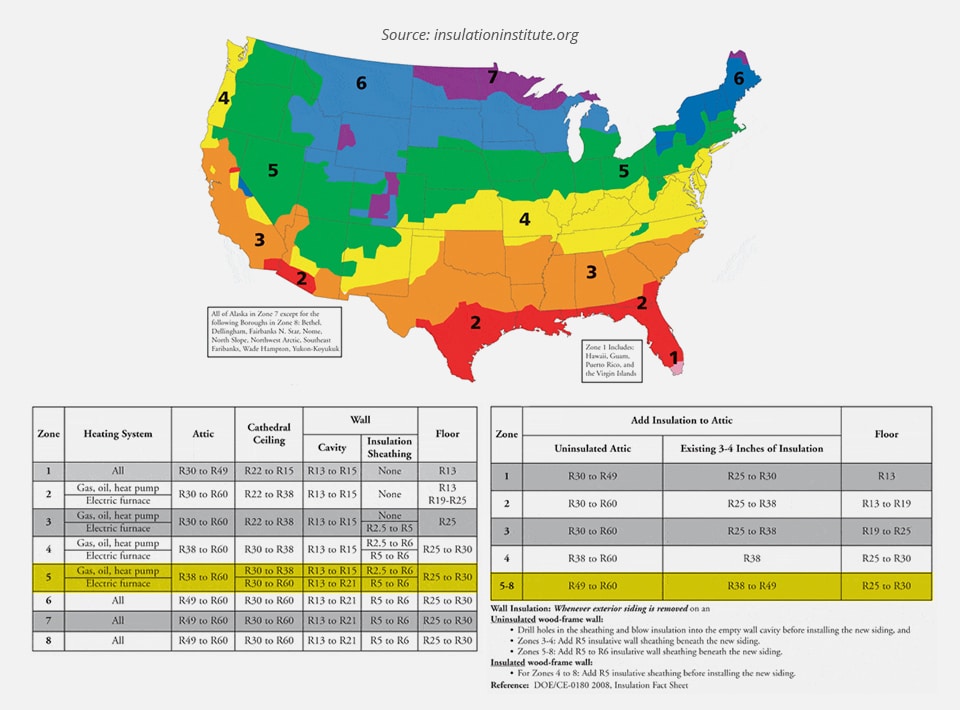When it comes to energy efficiency, nobody’s home is a perfect 10 out of 10. There are always solutions for improving this and making your home more energy-efficient and comfortable year-round. One of the best solutions is installing insulation.
As you’re getting ready to insulate your home, one of your first questions will likely be, “How much insulation do I need?” The amount of insulation your home needs primarily depends on two factors:
- The region you live in.
- The area of your home that needs to be insulated.
The Right Amount of Insulation for Your Home in the Rochester Area
Insulation R-Value
R-value is an important part of insulation — it’s an indication of a particular material’s resistance to conductive heat flow. The higher the R-value (thermal resistance), the greater the insulation’s effectiveness. The R-value depends on the insulation’s type/material, thickness and density. Although a higher R-value in general means a more effective insulator, the highest R-value possible may not necessarily be right for your project.
One example of this is if the space you’re insulating already has levels of insulation. Also, houses in certain climates don’t need as much insulation as others. For example, homeowners in Florida don’t need to insulate against extremely cold temperatures — the weather is quite different in Upstate New York. That’s why different regions of the United States have different recommended insulation levels.
Here in the Monroe County and Onondaga County areas, we’re in climate zone 5.
Learn More
What type of insulation do you need? Read about:
- Blown-in fiberglass
- The blown-in method uses a specialized machine to blow fiberglass insulation into areas of your home such as the attic, walls, or basement. Once blown in, the insulation is installed with a special fabric that allows it to seal any gaps in the space.
- Batt fiberglass
- Batt insulation comes in pre-cut panels and is typically made of fiberglass. It’s one of the most common forms of insulation available. Batts can be installed in various areas, such as the attic and walls.
- Spray foam
- Spray foam insulation is an alternative to traditional fiberglass insulation. It’s applied wet and quickly expands into a thick foam that fits snugly in wall cavities, crevices and gaps. It can be installed in hard-to-reach areas and around piping and wiring.
- Cellulose
- Cellulose is made from recycled newsprint and other recycled paper. Consisting of 80% to 85% recycled content and requiring less energy to make than other types of insulation, it’s one of the most environmentally friendly insulation materials available.
Contact MIG Building Systems today at 888-397-0988 or contact us online to learn more.
